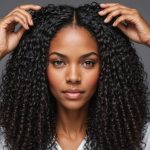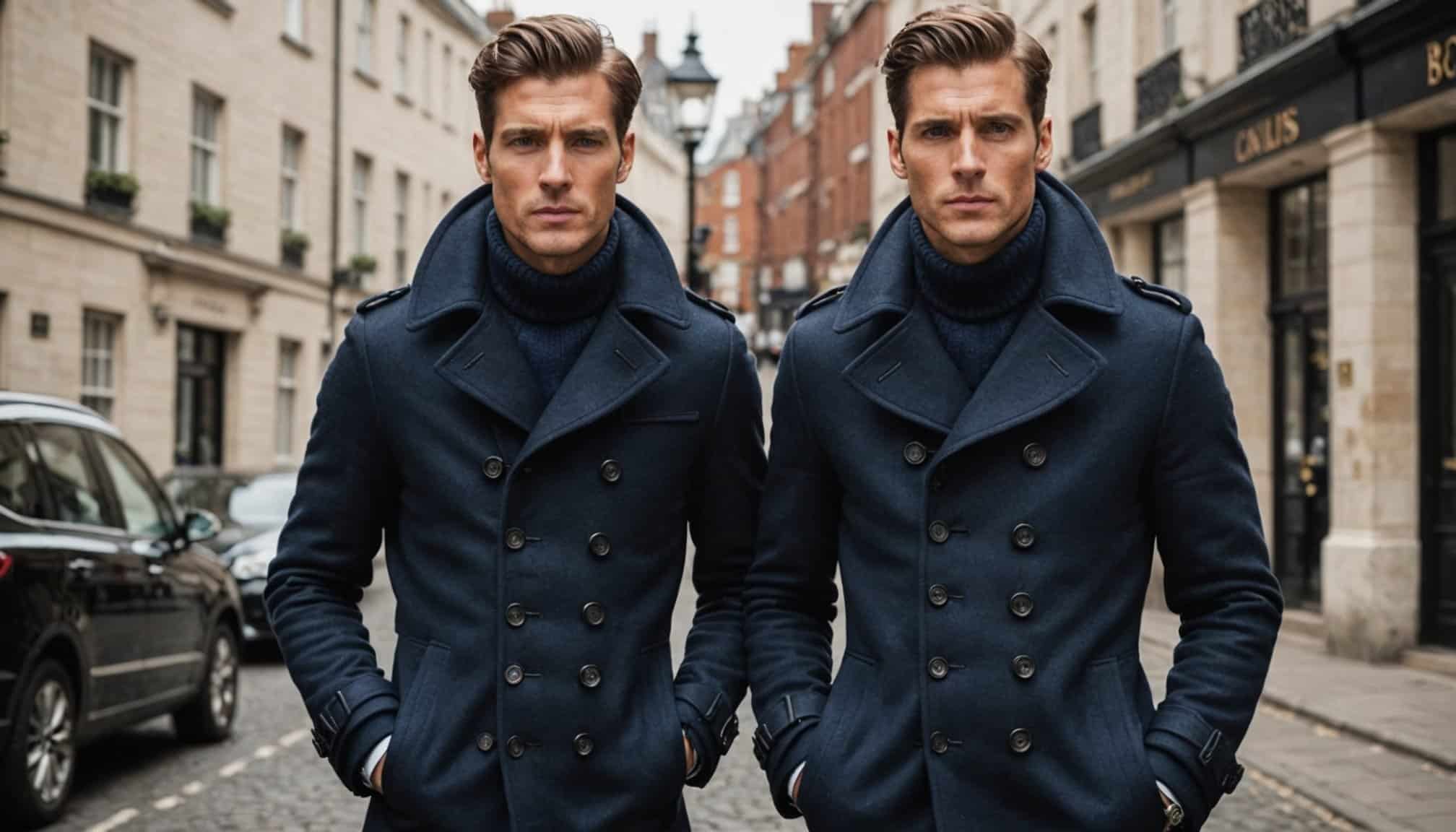Overview of the Peacoat
The peacoat has traveled a fascinating journey from its origins to becoming a staple in UK fashion essentials. Initially crafted in the 19th century for European sailors, its design aimed to offer warmth and protection against harsh sea conditions. Over time, the peacoat’s double-breasted front, broad lapels, and signature wool fabric have become emblematic of enduring style.
Fast forward to the contemporary fashion scene, and the peacoat maintains an iconic status. Its comfort and resilience have captured the imagination of style enthusiasts across the UK, earning its place as a must-have piece. The peacoat’s evolution reflects changes in fashion tastes while keeping its structural integrity intact—a testament to its enduring appeal.
Have you seen this : Helsa clothing: discover affordable luxury for every occasion
Among the key features that contribute to the peacoat’s timelessness are its versatility and practicality. It effortlessly complements both casual and formal ensembles, showcasing the perfect blend of form and function. The rich history embedded in each stitch highlights why it remains a favourite in the world of classic outerwear.
Whether braving chilly weather or seeking a stylish layer, the peacoat continues to serve as a versatile and chic wardrobe addition, embodying both tradition and modernity.
Also to see : The ultimate guide to choosing the perfect duffle bag for travel
Styling Tips for Peacoats
Choosing the right peacoat styling can significantly elevate your wardrobe. Whether it’s for a casual outing or a more formal event, knowing how to pair it effectively is key.
Layering Options for Various Weather Conditions
One way to enhance your peacoat styling is through strategic layering. For cooler temperatures, wear a turtleneck or a sweater beneath your peacoat. On milder days, a simple t-shirt may suffice, allowing more flexibility. Adjusting your layers based on the weather not only ensures comfort but also maintains a chic, put-together appearance.
Recommended Color Combinations for Different Occasions
Selecting the right colors is crucial in peacoat outfit combinations. For formal settings, stick with classic colors like navy or black paired with neutral attire. On the other hand, for a more casual or creative ensemble, consider pairing a gray peacoat with bolder colors, such as burgundy or forest green, to add visual interest and contrast.
Accessorizing Strategies to Enhance the Look
Completing your look with the right accessories can further boost your fashion advice credibility. Opt for scarves in complementary colors or patterns, and consider stylish gloves or a patterned hat. These small additions can transform a basic ensemble into a standout statement outfit.
Seasonal Outfits with Peacoats
When it comes to seasonal fashion during the autumn/winter style transition, choosing the right peacoat is crucial, particularly in the varied UK climate. Opt for a peacoat made of heavier fabrics like wool or cashmere, which offer warmth without sacrificing style. These fabrics are particularly ideal as they provide insulation against the biting cold, a common feature of UK winters, while remaining timeless.
For a complete UK climate outfit, consider pairing your peacoat with staples such as scarves and boots. A chunky knit scarf not only adds a layer of warmth but can also be a stylish accessory that complements the coat. Ankle or knee-high boots made of leather or waterproof materials are excellent choices to keep your feet dry and cozy.
As winter fades and milder weather arrives, adapting your peacoat for spring is simple. Opt for lighter fabrics and weights, or select a peacoat with a detachable lining. This versatility means you can continue incorporating peacoats into your wardrobe even on chillier spring mornings, ensuring that your transition between seasons is seamless. Embracing these strategies allows you to enjoy your favourite autumn/winter staples without having to compromise on comfort or style.
Do’s and Don’ts of Peacoat Fashion
Stepping out in style with a peacoat requires an understanding of basic fashion principles to ensure you maintain a polished look. Let’s explore some fashion tips that will help you master the art of peacoat etiquette.
Firstly, when wearing a peacoat, ensuring the correct fit is essential. A well-fitted peacoat should allow movement without being too snug or too loose. Opt for a classic double-breasted style, which pairs nicely with both casual and formal attire.
Avoid the common mistake of mismatched layers. When layering, your inner garments should never hang lower than your peacoat. Keep the layers neat and tailored to maintain a sleek appearance. Similarly, avoid over-accessorizing—a simple scarf or beanie can suffice in colder months.
When it comes to shoes, pairing your peacoat with complementary footwear reinforces your overall style. Boots or formal shoes tend to align well with the coat’s elegant nature.
To preserve your peacoat’s sophistication, maintain it regularly. Brush off lint and spot clean when necessary. Hang it on a wooden hanger to maintain shape and consider a professional clean before storing at the season’s end. By adhering to these styling principles and avoiding pitfalls, you can effortlessly elevate your wardrobe with this timeless classic.
Popular Peacoat Styles in the UK
The UK fashion scene has always been a trendsetter when it comes to outerwear, and trendy peacoats are no exception. As winter approaches, the demand for stylish and functional outerwear sees a significant rise. Among the most popular are the classic navy and wool blends with modern twists, including tailored cuts and double-breasted fronts. These designs seamlessly blend tradition with contemporary UK styles, appealing to a wide audience.
When exploring popular designs, brands such as Burberry, Marks & Spencer, and ASOS stand out for their commitment to quality and fashion-forward offerings. Each brand brings its unique essence to the peacoat, ranging from luxurious fabrics to innovative silhouettes.
Selecting the right peacoat style is not just about following trends, but also about understanding what suits your body type. For those with a larger frame, structured designs that enhance shoulders can create a more balanced look. Conversely, those with a petite figure might opt for shorter lengths and slimmer fits to avoid being overwhelmed by the coat. Key factors such as fabric, button placement, and length should guide your choice, ensuring that your peacoat is both a statement piece and a functional part of your wardrobe.
Color and Fabric Selection
When choosing a peacoat, several factors play a crucial role. The choice of peacoat colors can significantly impact your overall look. Classic colors like navy blue or charcoal grey remain popular due to their versatility, complementing various outfits seamlessly. However, bolder colors, such as burgundy or forest green, can add a touch of personality. Consider the occasions you plan to wear your peacoat to and whether you’d like to stand out or easily blend into most environments.
Equally important is the selection of fabric. Seasonal trends often influence fabric choices, but practicality should prevail, especially given the UK’s climate. Wool is a favored fabric for peacoats due to its excellent warmth retention and water-resistant properties, making it ideal for colder months. For those looking at more lightweight options, cashmere provides warmth and a softer touch though at a premium cost.
To ensure your peacoat complements your wardrobe, consider the existing color palette of your clothes. Opt for a fabric and color that enhance your personal style. By aligning your color preferences with seasonal trends and fabric durability, you achieve a blend of fashion and function, ideal for navigating the various UK seasons.
I’m sorry, it seems that part of the information required to generate the content is missing, specifically the Section Outline and Keyword Cluster. Could you please provide those so I can assist you effectively?











